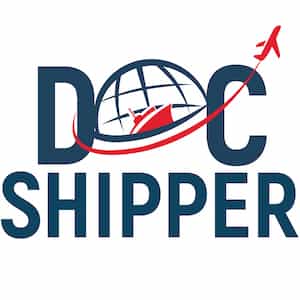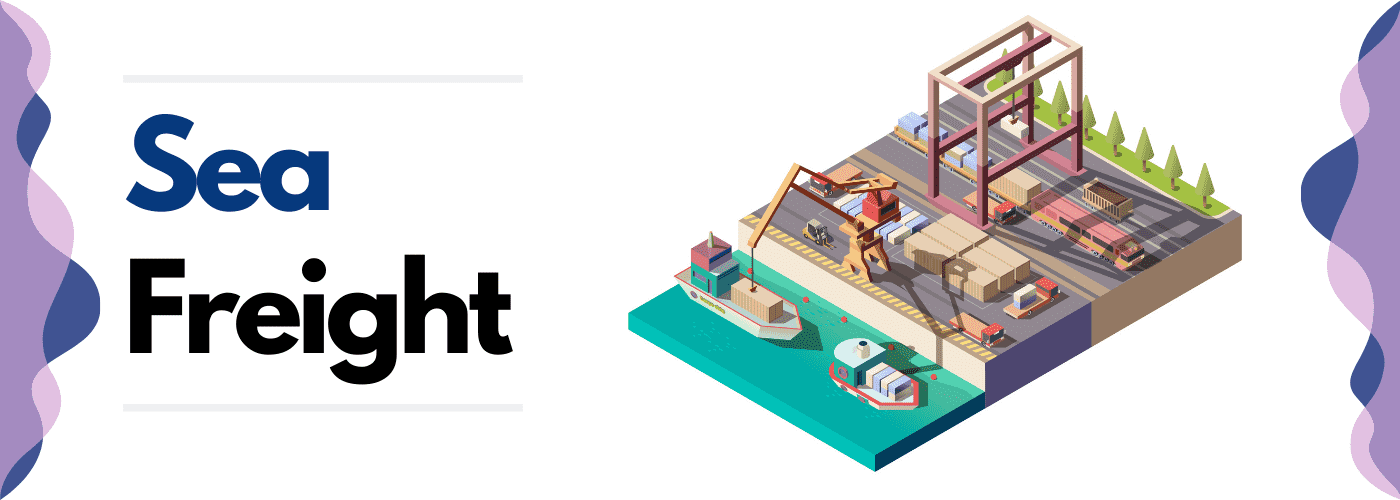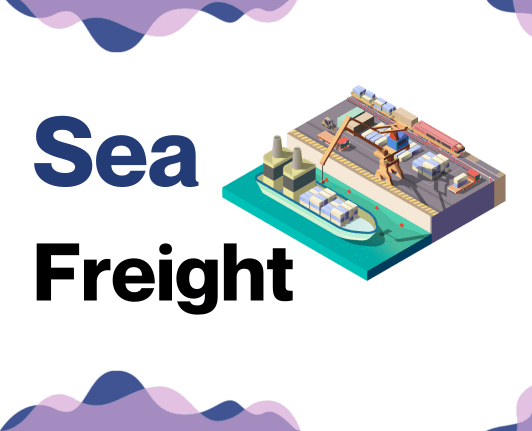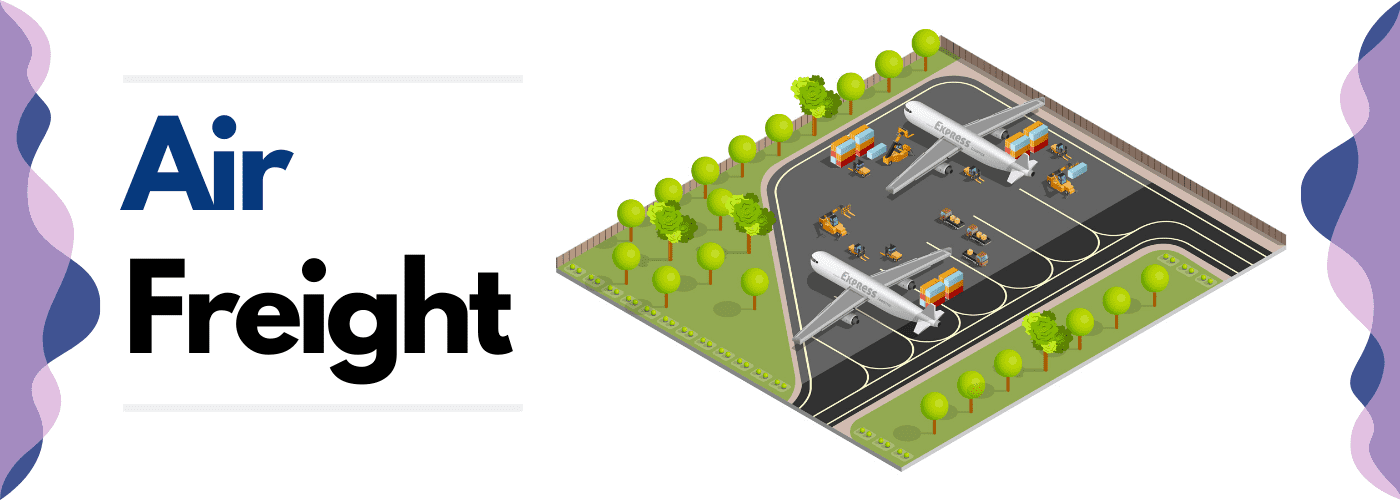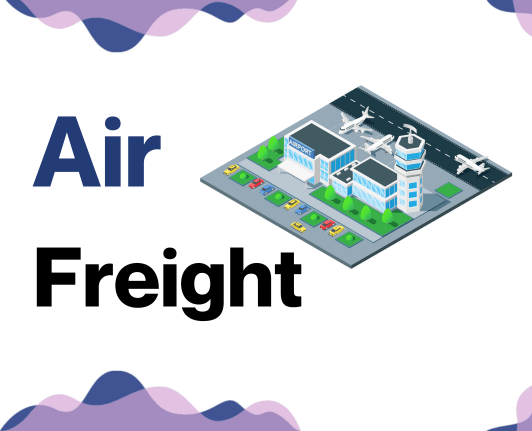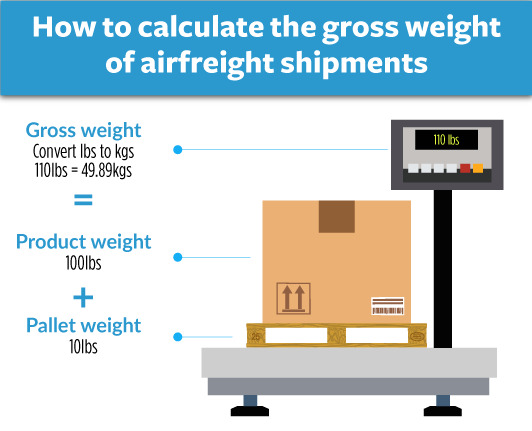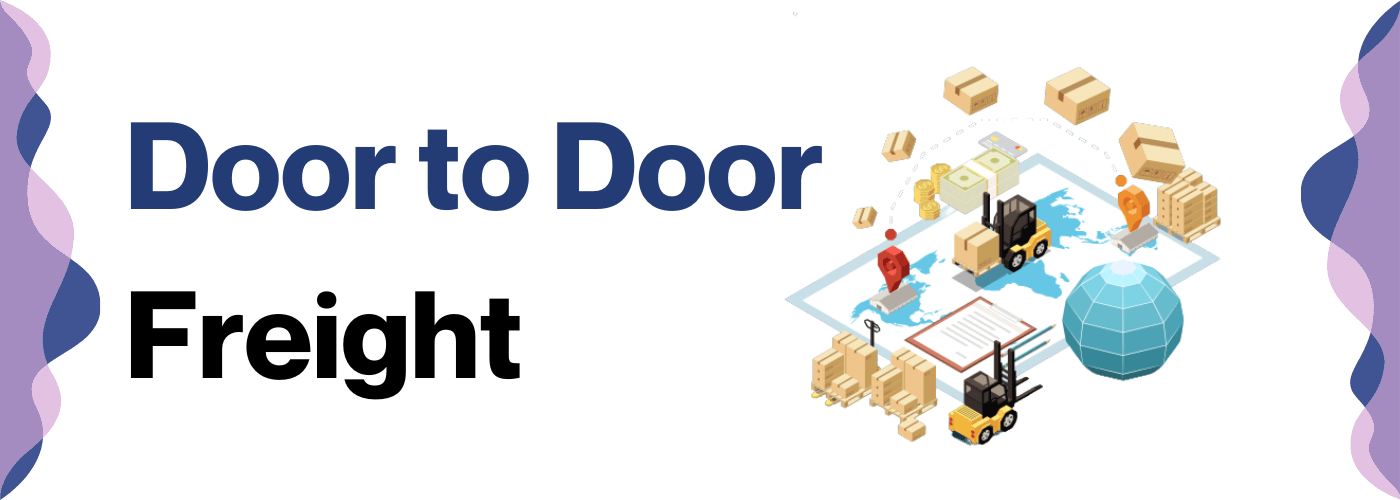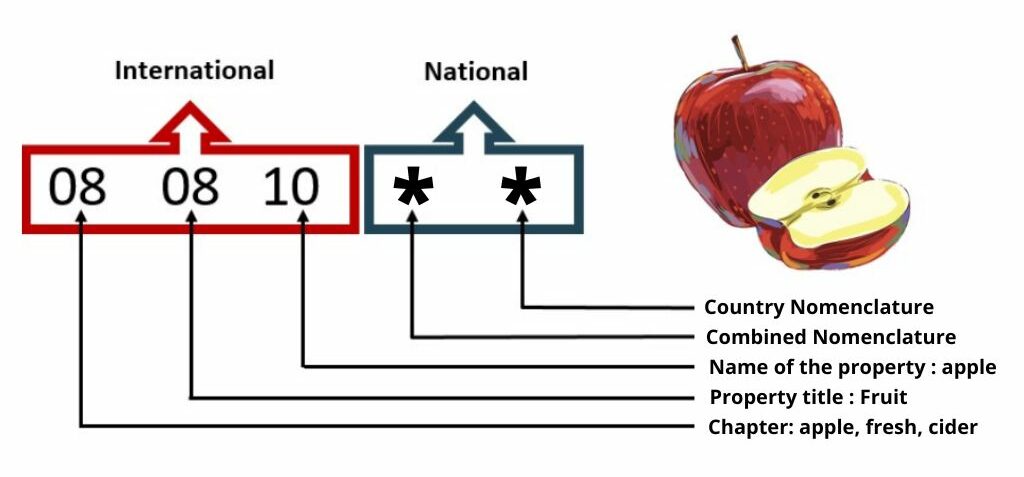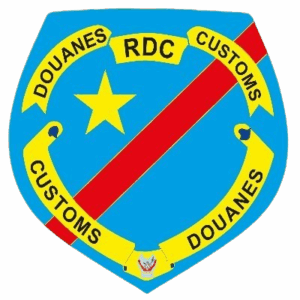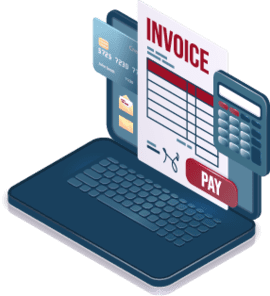Shipping from Malaysia to RDC might seem as complex as nailing jelly to a wall, but it doesn't have to be! One of the main pain points for businesses is unraveling the intricacies of transit times, rates, and customs regulations.
Our comprehensive guide will shed light on the vital facets of freight transport, custom clearances, duties, taxes and provide invaluable advice to businesses, helping them choose among air and sea and guide them through the intricate ways of international shipping.
If the process still feels overwhelming, let DocShipper handle it for you! As an experienced international freight forwarder, we turn the daunting challenges of the shipping process into a seamless success story for businesses worldwide.
Table of Contents
Which are the different modes of transportation between Malaysia and RDC?
Shipping goods between Malaysia and the Democratic Republic of Congo is a unique journey, aligned with the rhythm of these nations. The vast distance and multiple international borders call for strategic planning. The road or railway may seem like capricious snakes, often bumpy and confusing. So, our compass points towards sea or air freight – the swift birds of the logistics skies.
Whether you choose to sail the goods on the azure waters or fly them high amongst the clouds, your choice will ultimately dance to the tune of your specific shipping needs. Embrace this adventure for smooth business transactions!
How can DocShipper help?
Need guidance shipping goods between Malaysia and the Democratic Republic of Congo? DocShipper is here to simplify the process for you! We cover everything from transport organization to customs clearance with utmost efficiency. Get a complimentary estimate in under 24 hours or call our consultants for detailed advice - all free of charge! Know more today!
DocShipper Tip: Sea freight might be the best solution for you if:
- You're dealing with hefty quantities or oversized goods. Sea transport is your go-to for maximizing space without stretching your budget.
- Time sensitivity isn't a concern for your shipment. Ocean freight is known for its leisurely pace, especially when compared to the speed of air or rail.
- Your supply chain connects key international harbors. This positions you to take full advantage of a wide-reaching network of ocean trade routes.
Sea freight between Malaysia and RDC
Understanding the ropes of ocean shipping between Malaysia and the Democratic Republic of Congo (RDC) can make your business shipping experience smooth sailing, even in choppy waters. The robust trade alliance between these nations hinges primarily on their ports - Malaysia's prime Port Klang and RDC's Matadi Port, linking key industrial areas. Ocean freight stands out as the economical path for shipping high-volume goods, with the caveat of time.
Is the prospect daunting? You're not alone. Many shippers wrestle with the complexities of this route, tripping over unseen hurdles. The devil is in the details—from administrative red tape to deciphering customs clearance processes, it's quite a jigsaw puzzle. However, fear not! There are proven strategies that transform these challenges into stepping stones, ensuring your shipments arrive safe and sound.
In this section, we will examine these best practices, similar to a seasoned sailor navigating high seas, making your journey less about avoiding icebergs and more about smooth sailing. Customer-focused insights and easy-to-digest pointers abound.
Main shipping ports in Malaysia
Port Klang
Location and Volume: Located on the west coast of Peninsular Malaysia, Port Klang is the country's largest port, boasting a shipping volume of over 13 million TEUs per year.
Key Trading Partners and Strategic Importance: The port has strong connections with China, Singapore, Indonesia, and India, making it an influential player in ASEAN trade.
Context for Businesses: If your firm is looking to tap into the vast South-East Asian market, Port Klang's strategic location and extensive connections may prove beneficial to your shipping strategy.
Port of Tanjung Pelepas
Location and Volume: Situated at the eastern end of the busy Malacca Straits, this port handled over 11 million TEUs in 2022.
Key Trading Partners and Strategic Importance: As the 18th busiest port in the world, its key trade partners include China, the United States, and the European Union.
Context for Businesses: Given its significant throughput and role as a major global transshipment hub, the Port of Tanjung Pelepas may be key for high-volume trade or businesses seeking access to international markets.
Port of Penang
Location and Volume: Located in the northwestern part of Peninsular Malaysia, this port handles over 1.4 million TEUs annually.
Key Trading Partners and Strategic Importance: The port importantly serves as a connection point with India, China, and Singapore, also addressing local industrial and agricultural needs.
Context for Businesses: If your focus is on regional and local trade within ASEAN countries, the Port of Penang can be an essential element in your shipping plan due to its strong local ties.
Bintulu Port
Location and Volume: Found in Sarawak on Borneo Island, his port specializes in handling LNG.exports, accommodating over 50 million tons in 2022.
Key Trading Partners and Strategic Importance: Bintulu Port has outstanding strategic importance serving major LNG contracts with Japan, Korea, and Taiwan.
Context for Businesses: If LNG is in your portfolio, then Bintulu Port is likely to be critical to your shipping strategy, given its specialization in this area.
Kuantan Port
Location and Volume: Located on the eastern coast of Peninsular Malaysia, Kuantan Port handles over 25 million freight weight tonnes per year.
Key Trading Partners and Strategic Importance: This port has significant trade connections with India, Australia, and China, primarily in the iron and steel industry.
Context for Businesses: For businesses involved in the metal industry, Kuantan Port's specialist focus and dedicated connections to key iron and steel markets may suit your requirements.
Johor Port
Location and Volume: Situated at the southern tip of Peninsular Malaysia, Johor Port operated over 24 million FWT in 2022.
Key Trading Partners and Strategic Importance: It serves significant volumes of dry bulk and general cargo primarily to Indonesia, Thailand, and Singapore.
Context for Businesses: Johor Port's comprehensive dry bulk and general cargo facilities could make it ideal for businesses dealing with a diverse range of goods, ensuring versatile handling and seamless transits.
Main shipping ports in RDC
Matadi Sea Port
Location and Volume: Matadi Sea Port is situated on the left bank of the Congo River, approximately 92 miles from the Atlantic Ocean. As the primary international port of the Democratic Republic of Congo, it manages an annual shipping volume of roughly 3 million metric tonnes.
Key Trading Partners and Strategic Importance: The port has strong trade connections with countries like China, Belgium, South Africa, and the US. A strategic asset, it serves as a gateway for commodities essential to the region's development, including food, machinery, and fuel supplies.
Context for Businesses: If you're endeavouring to penetrate the Central African market, Matadi Sea Port is a significant logistics hub given its monopoly on maritime trade as well as its extensive reach and links with key global players - an ideal location for import/export operations.
Boma Port
Location and Volume: Located on the Congo River's right bank, Boma Port handles a significant amount of Congo's mineral exports and light cargo. The precise volume data might vary; however, it is known to manage key commodity flows in the region.
Key Trading Partners and Strategic Importance: Its main trading allies include European countries, Asia, and several African nations. Strategically, Boma Port is a crucial outlet for mining industries, exporting minerals and metals that drive the country's economy.
Context for Businesses: Boma Port is especially relevant if your business is associated with the mining industry. Its location and accessibility can streamline your operations, reducing logistics costs and facilitating real-time supply management.
Given that the Democratic Republic of Congo has a limited number of ports, the focus has to be on fully maximizing their potential for your logistical needs. By understanding their characteristics and role in global trade, you can make informed decisions tailored to your business strategy.
Should I choose FCL or LCL when shipping between Malaysia and RDC?
Choosing between Full Container Load (FCL) and Less than Container Load (LCL), also known as consolidation, can feel like navigating a complex maze. But fear not, understanding these two sea freight options is critical to your shipping success between Malaysia and RDC.
Your decision can greatly impact cost, delivery time, and overall process efficiency. This guide will demystify these options, empower you with knowledge, and help you make an informed choice that aligns with your specific shipping needs. Ready to dive in? Let's get started!
LCL: Less than Container Load
Definition: Less than Container Load (LCL) shipping is a method of transporting goods that do not fill an entire container. Your cargo shares the space with others, making it an affordable and efficient option for small volume shippers.
When to Use: LCL shipment is particularly beneficial when your cargo volume is less than 13/14/15 CBM. This allows for flexibility as you pay only for your portion of the container space, no need to rent a whole container.
Example: Imagine you're an SME in Malaysia dealing with specialty coffee beans. You have 10 CBM worth of goods to ship to RDC. Instead of waiting until you pile up enough goods to fill a whole container or paying for a full container's rent, you can go for LCL freight. It would economize both time and cost.
Cost Implications: As you're only paying for your portion in the container, LCL shipping quote tends to be significantly lower than if you were to rent the entire container (FCL). However, bear in mind, the overall price per unit shipped may be higher when compared to FCL. Hence, it's a balance between having affordable upfront costs versus per unit costs.
FCL: Full Container Load
Definition: FCL, or Full Container Load, in shipping refers to an exclusive option where a single container carries goods for one consignee only. The FCL container, be it a 20'ft or a 40'ft, offers added safety as it remains sealed from the point of origin to the destination.
When to Use: Choosing FCL shipping becomes more cost-effective and efficient when the cargo volume is more than 13/14/15 CBM. It's ideal for high volume shipping needs, ensuring your goods aren't mixed with other consignments.
Example: A furniture exporter in Malaysia shipping a large bulk of product to the Democratic Republic of Congo would benefit from choosing an FCL container. Their goods take up significant space, and with FCL, they secure their own container, avoiding any risks associated with mixed consignments.
Cost Implications: While FCL might have a higher initial cost than Less than Container Load (LCL), the overall cost per unit decreases when shipping at high volumes. As the FCL shipping quote is typically based on a per-container charge, rather than the volume of goods, larger shipments will thus cost less per cubic meter compared to LCL, making FCL more economical for large volume shippers.
Unlock hassle-free shipping
Experience seamless shipping with DocShipper, your dedicated freight forwarder that turns cargo transport complexities between Malaysia and RDC into a breeze. Our savvy ocean freight team assesses individual business requirements, shipment size, budget, and delivery timeline to guide you towards the most efficient shipping solution—Consolidation or Full Container. Leap out of the seemingly endless maze of cargo shipping. Get in touch with us today for your free estimate!
How long does sea freight take between Malaysia and RDC?
Marine transport between Malaysia and the Republic of the Democratic Congo (RDC) typically takes around 45 days, factoring in a range of variables. Keep in mind, transit times can vary significantly based on specifics ports utilized, the weight and nature of the cargo, among others. To get a precise estimation tailored to your needs, we highly recommend reaching out to a freight forwarder like DocShipper.
In the table below, we present the average transit times in days between the primary ports of each country:
| Malaysian Ports | RDC Ports | Average Transit Time (days) |
| Port Klang | Matadi | 55 |
| Tanjung Pelepas | Boma | 38 |
| Bintulu Port | Matadi | 50 |
| Kuantan Port | Boma | 40 |
*Please note the specific transit times are approximate and variable, contact a reliable freight forwarder for exact time frames.
How much does it cost to ship a container between Malaysia and RDC?
Pinning down an exact shipping cost from Malaysia to RDC can be just as challenging as predicting the ocean's waves. We're talking about a ballpark figure of around $10 to $100 per CBM in ocean freight rates.
Keep in mind, this broad range accounts for specific variables - Point of Loading, Destination Point, the carrier, nature of goods and ever-changing market dynamics. An accurate quote isn't plucked from thin air but tailored to your unique shipping needs by our seasoned shipping specialists.
Our commitment? To journey with you, ensuring you benefit from the most competitive and fitting rates the market has to offer. Staying afloat in the sea of freight forwarding has never been easier. Dive in with us!
Special transportation services
Out of Gauge (OOG) Container
Definition: An OOG container, also known as Out of Gauge cargo, is a shipping container designed to carry load that is oversized and cannot fit within the dimensions of standard shipping containers.
Suitable for: Machinery, building supplies, or other large cargo that exceeds the dimensions of regular shipping containers but can still be containerized.
Examples: Construction equipment like excavators, large pipes, or extensive machinery parts are commonly shipped using this method.
Why it might be the best choice for you: If your business deals with oversized goods that are still suitable for containerized transport, an OOG container provides a fairly economical and secure solution.
Break Bulk
Definition: Break bulk refers to the shipping method where goods are loaded individually onto the ship, rather than being loaded in a shipping container.
Suitable for: Large goods that aren’t containerized and are too big or heavy to be shipped as container cargo.
Examples: Yachts, transformers, turbines, wooden crates or other large and heavy items often require break bulk shipping.
Why it might be the best choice for you: Break bulk is the go-to method when dealing with exceptionally large or heavy goods that outsize even the largest OOG container specifications.
Dry Bulk
Definition: Dry bulk pertains to the shipping of loose cargo load, such as grain or coal, that is shipped in large quantities without packaging.
Suitable for: Commodities that are shipped in large volume and don't need packaging, such as coal, grain, or iron ore.
Examples: Agriculture industries often ship dry commodities like wheat or barley utilizing dry bulk shipping.
Why it might be the best choice for you: Dry bulk shipping offers the most economical solution when dealing with high volume, unpackaged commodities.
Roll-on/Roll-off (Ro-Ro)
Definition: Roll-on/Roll-off, or ro-ro vessels, refer to the shipping method where vehicles and machinery are driven on and off the ship on their own wheels.
Suitable for: Automobiles, trucks, semi-trailer trucks, trailers, or railroad cars.
Examples: New or used cars, construction machinery like bulldozers or loaders, or even RVs and caravans use this method for transportation.
Why it might be the best choice for you: If your product can be driven or towed and needs minimal handling during the shipping process, Ro-Ro is an efficient and safe choice.
Reefer Containers
Definition: Reefer Containers are refrigerated shipping containers designed to transport temperature-sensitive goods.
Suitable for: Food products, pharmaceuticals, or any goods that require a controlled temperature environment during transit.
Examples: Fresh fruits, meat, seafood, and dairy products are all shipped using reefer containers to maintain their freshness.
Why it might be the best choice for you: If your business deals with perishable goods that need constant temperature control, reefer containers provide that steadiness from start to finish.
Each shipping method has its own advantages depending on the type of product you need to ship. At DocShipper, we understand that every cargo is different, and we are here to help you in finding the optimal solution tailored to your individual needs. Contact us for a free shipping quote in less than 24 hours, and let's optimize your shipping together.
DocShipper Tip: Air freight might be the best solution for you if:
- You're pressed for time or facing a non-negotiable deadline. Air freight delivers unparalleled speed when it comes to transit times.
- Your shipment is modest in size, falling under 2 CBM. Air freight is particularly well-suited for these smaller consignments.
- Your supply chain includes destinations that are off the beaten maritime or rail paths. Air freight gives you access to a comprehensive global airport network.
Air freight between Malaysia and RDC
When you need to make quick and reliable shipments from Malaysia to RDC, air freight stands out. Imagine needing to send a batch of high-quality electronics or pharmaceuticals halfway across the world. You need speed, and you can't compromise on security. This is where air freight shines. It's like your very own superhero, swooping in to deliver your small, high-value packages straight to the heart of RDC without a hitch.
However, without the right knowledge, this superhero can quickly become costly. Shippers often miscalculate air freight costs due to an incorrect weight formula. Picture it as a recipe - use the wrong quantities, and your cake (or freight costs) may be a disaster. Similarly, a lack of knowledge around best practices can have the same impact as leaving the oven on for too long, resulting in a shock at how high your shipping bill has soared.
Don't worry, though - we're here to guide you, step by step, to ensure your shipping journey is as smooth as possible. Together we'll unlock all the secrets and make air freight feel more like a trusty friend than an unpredictable superhero. Now, let's dive in and learn how to master your air freight shipping from Malaysia to RDC!
Air Cargo vs Express Air Freight: How should I ship?
Cracking the jargon and choosing between air cargo and express air freight can be tough when it comes to shipping from Malaysia to RDC, right? Imagine air cargo as hitching a shared ride in a commercial airline's haul, while express air freight is like having your own dedicated private jet to deliver goods. Stick around to explore which one suits your business best, while unpacking the pros and cons of each.
Should I choose Air Cargo between Malaysia and RDC?
Considering your shipping needs, it's essential to weigh the pros and cons of different shipment channels. Air cargo, for instance, offers a cost-effective and reliable solution. Leading airlines such as Malaysia Airlines and Congo Airways offer solid service on the Malaysia-RDC route.
Their fixed schedules, while ensuring regularity, may lead to longer transit times. However, once your cargo exceeds 100/150 kg (220/330 lbs), choosing air cargo becomes considerably more attractive, providing an economical way to transport higher volume goods.
Should I choose Express Air Freight between Malaysia and RDC?
Express Air Freight, a unique service provided by reliable couriers like FedEx, UPS, and DHL, uses dedicated cargo planes without passengers. Perfect for shipments under 1 CBM or 100/150 kg (220/330 lbs), it ensures quick, secure delivery.
Are your goods of a high value or needed promptly in RDC? This could be your ideal solution. Investing in express air freight alleviates any concerns about delays or damages. Not to mention, it's user-friendly - your packages get door to door service. From Malaysia to the RDC, your cargo is our priority.
Main international airports in Malaysia
Kuala Lumpur International Airport (KLIA)
Cargo Volume: KLIA is Malaysia's busiest cargo airport, handling roughly 820 000 metric tonnes of cargo annually.
Key Trading Partners: Key trade partners include China, Singapore, Japan, and the USA.
Strategic Importance: As the country's main international airport, KLIA has a strategic location in Southeast Asia, facilitating trade with both the Asia Pacific region and beyond.
Notable Features: The cargo complex, known as Advanced Cargo Centre, is a 108-acre site that provides a wide range of cargo handling services.
For Your Business: If your business involves a substantial volume of cargo or relies strongly on connections within the Asia Pacific region, KLIA is well-equipped to handle your logistics needs. Its robust cargo handling capacity might be particularly advantageous for your imports and exports.
Penang International Airport
Cargo Volume: This airport handles over 360,000 metric tonnes of cargo annually and is the nation's second busiest airport in terms of cargo traffic.
Key Trading Partners: Main trading partners include China, Singapore, and the European Union.
Strategic Importance: Located in the Free Industrial Zone, Penang International helps facilitate freer trade and has strong connections with tech industries.
Notable Features: Penang International hosts the Penang Freight Forwarders Association, providing facilities to streamline and accelerate the shipping process.
For Your Business: If your business is tech-oriented or depends on fast, efficient shipping processes, Penang International's position in the Free Industrial Zone and direct access to freight forwarding services might make this airport the perfect fit for your shipping operations.
Sultan Abdul Aziz Shah Airport
Cargo Volume: Not publicly listed, but it is well-equipped to handle cargo shipments.
Key Trading Partners: Key trading partners include Saudi Arabia, Thailand, Singapore, and Indonesia.
Strategic Importance: Also known as Subang Airport, it is very close to Kuala Lumpur, adding convenience for cargo transportation.
Notable Features: It is known for its state-of-the-art facilities and logistics network with ample warehousing facilities.
For Your Business: If your shipping routes are centralized within Southeast Asia and the Middle East, Sultan Abdul Aziz Shah Airport's strategic location and well-connected logistics network might augment your shipping strategy.
Kuching International Airport
Cargo Volume: Kuching International Airport manages nearly 25,000 tonnes of cargo per year.
Key Trading Partners: Main trading partners include Indonesia, Singapore, Brunei, and Australia.
Strategic Importance: Being in East Malaysia, the airport is particularly important for businesses that engage heavily with Borneo Island and the surrounding regions.
Notable Features: The airport is undergoing improvements to increase its cargo handling capacity.
For Your Business: Businesses dealing predominantly with Indonesia, Australia, or the Borneo Island territories will find the improved cargo infrastructure poised to bolster their shipping needs.
Senai International Airport
Cargo Volume: Senai handles over 60,000 metric tonnes of cargo annually.
Key Trading Partners: Dominant trading partners are China, Singapore, Indonesia, and Thailand.
Strategic Importance: Located in one of Malaysia's most industrialized areas, Senai is surrounded by various multinational companies and is part of an improving logistics infrastructure.
Notable Features: The airport's free trade zone, Senai Airport Free Industrial Zone (SAFIZ), boosts its cargo capabilities.
For Your Business: If your business is situated alongside other multinational companies or if you seek to take advantage of the free trade zone, Senai International Airport can play a critical role in optimizing your import-export operations.
Main international airports in RDC
N’djili Airport(Kinshasa)
Cargo Volume: Approximately 30,000 metric tons of cargo annually.
Key Trading Partners: Primarily Belgium, France, South Africa, and China.
Strategic Importance: N'djili Airport operates as the principal gateway to the Democratic Republic of Congo (DRC), handling the bulk of the country's air cargo.
Notable Features: Boasts one of the longest runways in Africa, easily accommodating large cargo aircraft. The airport is also home to numerous cargo handling facilities and services.
For Your Business: If your company is looking to ship heavy goods or aiming for reliable long-term trade networks within Central Africa, N'djili's facilities and established trading networks make it a highly advantageous hub.
Lubumbashi International Airport
Cargo Volume: Handles over 10,000 metric tons of freight per year.
Key Trading Partners: Mainly China, South Africa and Zambia.
Strategic Importance: As the second busiest airport in the DRC and close to mining areas, Lubumbashi Airport is a significant transit point for cargo, particularly minerals.
Notable Features: Strategic location near mining sites, with good domestic and limited international connections.
For Your Business: If your business involves shipping goods to and from mining industries or if your supply chain involves connecting with regional markets, Lubumbashi could be a strategic node in your network, especially for mineral trading.
Goma International Airport
Cargo Volume: Carries around 5,000 metric tons of freight annually.
Key Trading Partners: Principal trade ties with Rwanda, Kenya, and Uganda.
Strategic Importance: Situated close to the Rwandan border, Goma is important for regional trade, utilizing its proximity to East Africa.
Notable Features: Availability of hangar space for cargo handling and storage. Reconstruction efforts after volcanic eruptions have improved infrastructure overall.
For Your Business: If your operations focus on East Africa or require rapid cargo movements in this region, Goma's logistical capabilities and geographic position could cater to your operational needs.
Kisangani Bangoka International Airport
Cargo Volume: Around 2,000 metric tons of cargo per year.
Key Trading Partners: Mainly Uganda, Rwanda, and Kenya.
Strategic Importance: Being the third largest airport in DRC, Kisangani Bangoka provides a link to remote areas in the northeast of the country.
Notable Features: Surrounded by rich forestry regions, making it a lifeline for timber export businesses.
For Your Business: If your business is specialized in timber exports or involved in relief operations, Kisangani Bangoka positioned amidst significant forest reserves provides strategic opportunities to expand your footprint in these niches.
Mbandaka Airport
Cargo Volume: Handles less than 1,000 metric tons of freight annually.
Key Trading Partners: Local markets dominate, with occasional international activity from Belgium and France.
Strategic Importance: Smaller in scale, but provides a key link to remote regions in the northwestern DRC, serving local communities and businesses alike.
Notable Features: Operates a domestic cargo service, with a network of small, feeder services to and from remote locations.
For Your Business: If your business mainly focuses on domestic markets or targets underserved areas in remote regions of the DRC, the Mbandaka Airport’s network of feeder services might just be your ticket to securing these niche markets.
How long does air freight take between Malaysia and RDC?
On average, air freight shipping from Malaysia to the Democratic Republic of Congo (RDC) takes about 6-7 days. However, keep in mind that this is an estimate; actual transit times can always vary. They depend heavily on factors like the specific departure and arrival airports, the weight of the consignment, and the nature of the goods being shipped.
To get the most accurate timings for your specific shipment, we recommend consulting with a professional freight forwarder such as DocShipper.
How much does it cost to ship a parcel between Malaysia and RDC with air freight?
Shipping costs for air freight parcels between Malaysia and the Democratic Republic of Congo widely range from approximately $5 to $15 per kilogram. Precise rates cannot be anticipated due to factors such as airport location distance, parcel dimensions, weight, and the nature of goods.
Rest assured, we calculate rates on a case-by-case basis, ensuring our clients receive the best possible options. Our team is committed to your shipping needs and the intricacies of your individual requirements. For free, personalized quotes within 24 hours, do not hesitate to contact us.
What is the difference between volumetric and gross weight?
Gross weight is the actual weight of your shipment, including packaging and pallets. Volumetric weight, on the contrary, is based on your shipment's overall dimensions.
In air cargo, you calculate the volumetric weight by multiplying the length, width, and height (in centimeters) of your package and then dividing by 6000. For Express Air Freight, it's the same, only divide by 5000 instead.
Let's illustrate this with a hypothetical shipment. Your package has dimensions of 40cm (height), 50cm (width), and 60cm (length), and a gross weight of 35 kg (approximately 77 lbs).
For Air Cargo:
(40cm50cm60cm) / 6000 = 200kg.
For Express Air Freight:
(40cm50cm60cm) / 5000 = 240kg.
So although your actual weight is 35 kg (about 77 lbs), you're charged as if it weighs 200 kg (440 lbs) for Air Cargo and 240 kg (528 lbs) for Express Air Freight.
These calculations matter because in air freight your chargeable weight isn't necessarily the actual gravitational weight. The freight charges will be higher if the volumetric weight outweighs the gross weight. Understanding these calculations ensures better cost-benefit analysis in your shipping strategy.
DocShipper tip: Door to Door might be the best solution for you if:
- You value convenience and want a seamless shipping process, as door-to-door takes care of every step from pickup to delivery.
- You prefer a single point of contact, as door-to-door services typically provide a dedicated agent to handle all aspects of the shipment.
- You want to minimize the handling of your goods, reducing the risk of damage or loss, as door-to-door minimizes transitions between different modes of transport.
Door to door between Malaysia and RDC
International Door to Door shipping: it's a seamless service where your goods are picked up right from your doorstep in Malaysia and delivered directly to a specified location in RDC. It's truly a no-hassle approach, bearing in mind that it simplifies logistics and indeed saves time on customs clearance. So, if removing the complexity of trans-border trade sounds good to you, strap in, because we're about to dive in!
Overview – Door to Door
Door-to-door shipping between Malaysia and RDC offers you the ease of a stress-free logistics solution. Wrestling with transport complexities, daunting customs processes, or the intricacies of administrative paperwork? This inclusive service is your ‘one-stop-shop', handling it all! Though slightly costlier, its convenience cannot be understated, making it our clients' favorite choice.
With door-to-door shipping, the hard part of the shipping process is no more your concern, leaving you to focus on what's more important - your business. Save yourself from the shipping hassle today! Enjoy the comfort of your goods arriving straight up to your doorstep.
Why should I use a Door to Door service between Malaysia and RDC?
Ever tried to maneuver a kangaroo with a GPS? Well, navigating freight shipping can sometimes feel just as wild. Let’s tame that boisterous 'roo with Door to Door service.
1. Stress-buster: Think of Door to Door service as your personal logistics therapist. It takes care of goods pickup at the start, handling all the knotty elements of transport and customs clearance. You get to sigh in relief, bidding adieu to logistical headaches.
2. Tick-tock, timely delivery: Urgent shipments? Tick-tock on the clock can be nerve-racking! With Door to Door service, strict timelines are adhered to, ensuring your goods sprint from Malaysia to RDC without unnecessary holdups.
3. Pampering complex cargo: Some cargo needs an extra dab of TLC. Complex, fragile, or uniquely-sized freight gets the attention it requires with Door to Door service, ensuring it's handled like a royal heirloom all through its journey.
4. Convenience King: Imagine your cargo is on a VIP travel scheme - that's Door to Door. It includes trucking to both origin and final destinations. It's a 'sit back and relax' situation as your freight enjoys its first-class journey.
5. Safety Seal: Worrying about your goods getting lost is so 1999. Door to Door service provides a secure transit experience, ensuring your cargo isn’t playing hide-and-seek when you need it most.
And just like that, your kangaroo now listens to your instructions. Choose Door to Door service and make your shipping journey as easy as a hop, skip and a bounce.
DocShipper – Door to Door specialist between Malaysia and RDC
Experience stress-free, door-to-door shipping from Malaysia to RDC with DocShipper. We're proficient in managing every detail, from packing to transport, customs clearance, and all methods of shipping. Our dedicated Account Executive ensures a seamless process for your convenience.
Contact us for a no-obligation estimate in under 24 hours, or call to speak with our expert consultants at no cost. Trust in our expertise for a hassle-free international shipping experience.
Customs clearance in RDC for goods imported from Malaysia
Customs clearance can be a complex and tricky world for businesses transporting goods from Malaysia to RDC. It involves a minefield of duties, taxes, quotas, and licenses. One wrong step, like unforeseen extra fees or compliance issues, could trap your goods in customs limbo and derail your entire operation.
Comprehending customs intricacies could be the thread separating successful ventures from costly misadventures. Fear not! In the following sections, we break down this complex process and focus on how to glide past potential setbacks. Plus, our DocShipper squad is ready to shoulder the load.
Need a budget estimate for your goods? Drop us the origin, value, and HS code of your items, prerequisites to kickstart the estimation. So, let's dive into this challenging but necessary process, as understanding customs clearance is pivotal for your business to fully spread its international wings.
How to calculate duties & taxes when importing from Malaysia to RDC?
Navigating the complexities of customs duties and taxes can often be a daunting task. It's essential to understand that these costs are determined by several factors: the country of origin, the Harmonized System (HS) code, the Customs Value, and the Applicable Tariff Rate, as well as any additional taxes and fees that might apply to your products.
Now, let's dive into these components a bit deeper. Your first step, and arguably the most crucial, is identifying the country where your goods were manufactured or produced. This piece of information greatly influences the calculation of your customs duties, as it establishes the basis for your shipment's country of origin.
Step 1 - Identify the Country of Origin
Every successful import endeavor kicks off with a clear understanding of the country of origin - an unassuming yet critical step. So, why do we stress this?
Firstly, your goods' origin dictates the Harmonized System (HS) Code assigned to it, affecting the duties and taxes you'll need to pay. A small oversight in origin identification can lead a business down the rabbit hole of incorrect HS Codes and miscalculated fees.
Secondly, trade agreements between Malaysia and RDC significantly impact duties. An agreement, such as the African Continental Free Trade Area (AfCFTA), under which RDC falls, alters the customs fees structure, often offering preferential rates.
Thirdly, origins impact barrier measures. Some products may face stringent import restrictions or even bans due to their origin. For example, electronic goods or certain food items from specific countries face restrictions.
Additionally, your goods' origin affects other costs, such as transportation, which are easy to overlook yet crucial to your overall budget.
Finally, consider the documentation. Different countries have varied requirements, and missing out on an essential piece can delay your shipment or cause rejection at customs.
Arm yourself with this knowledge, ensure your shipments sail smoothly, and avoid fretting over unexpected costs or delays. Lesson 101 - never underestimate the power of knowing your goods' origin!
Step 2 - Find the HS Code of your product
The Harmonized System Code, commonly known as the HS Code, is a vital part of international trade. It's an internationally standardized system of names and numbers, used to classify traded products. This system allows customs authorities to easily identify the products being shipped, determine the appropriate customs duty, and gather statistical data on international trade.
When shipping products across borders, you'll typically need to find the appropriate HS Code. An easy method is to ask your supplier, since they're often familiar with the regulations surrounding the product they're exporting.
If asking the supplier isn't an option, fear not, we have a step-by-step guide to help you find it on your own.
Step 1: Open the Harmonized Tariff Schedule on your web browser, a useful HS lookup tool.
Step 2: Enter the name of your product in the search bar.
Step 3: Look at the 'Heading/Subheading' column. This is where you'll find your product's HS code.
Now, it’s worth noting that precision is crucial when choosing your HS Code. A wrong code could lead to shipping delays as well as potential fines. So while the process is straightforward, make sure you double-check everything to avoid unnecessary complications down the line.
Here's an infographic showing you how to read an HS code. This visualization should provide further assistance in understanding this comprehensive classification system.
Step 3 - Calculate the Customs Value
When you're importing goods from Malaysia to RDC, determining the appropriate customs value of your shipment can feel like a puzzle. But don't worry, it's less complicated than it seems. Rather than just the product's market price, we're talking about the CIF value here. That might sound intimidating, but CIF simply stands for the cost of the goods, plus international shipping charges, plus insurance costs.
For instance, if the price of your goods is $1000, the shipping cost $200, and the insurance is $50, the CIF value or the customs value is $1250. Understanding this gives you a clearer picture of the costs involved and helps to avoid unexpected hiccups in your shipping process. This focus on CIF means your shipment's customs value is consistently calculated, keeping your freight forwarding smooth sailing from Malaysia to RDC.
Step 4 - Figure out the applicable Import Tariff
An import tariff is essentially a tax imposed on imported goods and is generally charged as a percentage of the transaction value of the import, known as the Customs Value. Now let's go to the point: In the Democratic Republic of Congo (RDC), the Harmonized System (HS) codes are used for categorizing products and determining the applicable import tariff rates.
Using your product’s HS code, for example, let's take 1006.30, which corresponds to semi-milled or wholly milled rice. You would head to the respective trade governance website or tool to lookup the import tariff rate for this specific product.
Let's say the result displays an import tariff of 30%. If your CIF (Cost, Insurance, and Freight) value is, for example, $10,000 USD, your import tariff would be 30% of $10,000, which amounts to $3,000. Therefore, planning shipment costs involves considering these potential additional expenses to ensure smooth customs clearance and delivery of your goods to RDC. Always remember, each product has its own tariff code, so double-check the exact percentage applicable to your good before shipping.
To validate this information or for future references, you may use the TARIC System - European Customs to check the HS code and determine the customs duties for your products.
Step 5 - Consider other Import Duties and Taxes
So, you've managed to successfully navigate through the main import duties when shipping from Malaysia to RDC, but what about the other fees? Although the tariff rate is crucial, it's vital not to overlook other duties and taxes related to the specific product and its country of origin.
An excise duty, for example, could be applied to luxury goods like jewelry or high-end electronics. Suppose you're importing a diamond necklace, the excise duty could significantly increase the total cost.
Then there's the possibility of anti-dumping taxes. These are levied to protect local industries from underpriced foreign goods. So, if you're importing inexpensive computers that can undercut local products, you might face this extra tax.
But the most critical among the extra charges is the VAT. This tax is calculated by adding up the cost, insurance, freight (CIF) value with all other duties. If the VAT rate is 18% (just an example, actual rates may vary), and your CIF value plus other duties is $10,000, your VAT will be $1,800.
Remember, these are only potential charges. The exact rates will depend on your product type, its value, and your trade agreement with RDC.
Step 6 - Calculate the Customs Duties
Customs duties in the Democratic Republic of the Congo (DRC) are calculable through combining your goods' customs value, Value Added Tax (VAT), anti-dumping taxes, and Excise Duty. For a clear calculation, use these formulas:
1. For customs duties only: Multiply the customs value by the applicable percentage (let's say 5%). So, if your goods cost $5,000, your duties would be $250.
2. For customs duties and VAT: Add the VAT (assume 18%) to the customs duties; using the previously calculated $250, the VAT comes out as $450, totaling $700.
3. For customs duties, VAT, anti-dumping taxes, and Excise Duty: Add up all the corresponding values, e.g., if there's a 10% anti-dumping tax and a 5% Excise Duty in addition to the previous charges, you'll pay $500 and $250 respectively, totaling a sum of $1,450.
Confused? Don't be. At DocShipper, we simplify complexities, handling every step of customs clearance globally. Rest assured you'll never pay a cent more than required. Contact us for a swift, 24-hour free quote.
Does DocShipper charge customs fees?
Navigating through customs can be quite the maze! As your diligent custom broker in Malaysia and RDC, DocShipper doesn't capitalize on customs duties - these go straight to the government. What's billed are the customs clearance fees for facilitating the process. Questioning a charge? We got you covered! We'll provide the customs office documents, so you only pay what the authorities levy, nothing extra. Psst! Businesses often confuse these fees - you're not alone. Now, you're already one step ahead!
Contact Details for Customs Authorities
Malaysia Customs
Official name: Royal Malaysian Customs Department
Official website: https://www.customs.gov.my/en
RDC Customs
Official name: Direction Générale des Douanes et Accises (DGDA)
Official website: http://www.douanes.gouv.cd/
Required documents for customs clearance
In shipping goods internationally, the puzzle of customs clearance often stumps businesses. Here, we will demystify the Bill of Lading, Packing List, Certificate of Origin, and CE standard Documents of Conformity to help your cross-border trade run smoothly.
Bill of Lading
When shipping from Malaysia to the Democratic Republic of Congo, having your Bill of Lading (BOL) on hand is vital. It's like your shipment's passport, marking the transfer of ownership from seller to buyer. Handling the BOL can seem daunting, but there's a shortcut: the electronic (telex) release, which speeds up the process significantly. Instead of waiting for a paper BOL to arrive, you can receive it electronically!
Bear in mind; this doesn't replace the Air Waybill (AWB) for air cargo, which serves the same function but in the skies. Your takeaway? Fully understanding and appropriately managing your BOL and AWB can pave the way to smoother, faster shipping between Malaysia and the Democratic Republic of the Congo.
Packing List
Packing a shipping container is like piecing together a complex jigsaw puzzle, and the Packing List is your guide. As a vendor shipping goods from Malaysia to the Democratic Republic of the Congo (RDC), the onus is on you to create a precise and comprehensive Packing List. It's your passport to getting your goods cleared without unexpected hassles.
Whether you're transporting hefty mining machinery parts by sea or delicate microchips by air – each item's type, quantity, and total weight are crucial data points. Picture a shipment missing its Packing List – that's a recipe for delays, a customs officer’s nightmare.
Remember, accuracy is king: an erroneous list could mean a levy of unexpected duties or even a seized shipment. So, when you're compiling that list, think of it as ticking off boxes on a customs clearance checklist to ensure a smooth shipping journey.
Commercial Invoice
Securing a smooth customs clearance between Malaysia and the Democratic Republic of the Congo (RDC) hinges on your Commercial Invoice. It's more than just a bill; it's a declaration detailing your cargo's value, weight, quantity, and description.
Make sure these align perfectly with your Packing List and Bill of Lading. Misalignment may lead to delays, penalties, or confiscation. Also, take note of mandatory fields like country of origin and Harmonized System (HS) codes specific to your commodity.
Here's a tip: Using a local language in addition to English can make the clearance process faster. Remember, when shipping from Kuala Lumpur to Kinshasa, your Commercial Invoice is your cargo's passport, so keep it accurate, clear, and coherent.
Certificate of Origin
Navigating the logistics waters between Malaysia and RDC? The Certificate of Origin (CoO) is your ship's critical anchor. It's an essential document that affirms your goods were manufactured in a particular country – here, Malaysia.
Think of the CoO as your secret door to preferential customs duty rates. For instance, if a RDC business orders electronic components made in Malaysia, the CoO verifies their Malaysian origin. This often means your products will enjoy lower tariffs under trade agreements, saving your business on shipping costs.
Remember, a swift and fuss-free customs clearance hinges on your CoO. It’s the silent hero that empowers your goods' welcome into RDC. To keep your vessel sailing smooth, ensure this certificate is accurate and readily available.
Get Started with DocShipper
Navigating customs clearance between Malaysia and RDC can seem like a labyrinth, but don’t fret! DocShipper is right by your side. Specializing in streamlining complex customs procedures, we'll ensure your shipment proceeds smoothly and on schedule. Don’t be overwhelmed - reach out now for a free quote delivered to your inbox within 24 hours. Your hassle-free shipping solution is just a click away.
Prohibited and Restricted items when importing into RDC
Understanding what you can't ship into the Democratic Republic of Congo (RDC) can be quite tricky. Red tape, legal jargon, and ever-changing regulations can become your worst nightmare. This guide aims to clear the fog, detailing the products not allowed or restricted while importing into the RDC.
Restricted Products
- Drugs and Medicines: You'll have to apply for an import permit from the Ministry of Health to bring these into RDC. Ensure that your products are compliant with the local health regulations.
- Firearms and Armament: To deal with firearms, get a special permit from the National Police of the Democratic Republic of Congo. Make sure that your firearms meet all required specifications.
- Chemical Products: If you're shipping chemical substances, check with the Ministry of Environment and Sustainable Development. They'll provide the necessary permit, and ensure your products respect environmental safety standards.
- Agricultural Products: When shipping agricultural products, a permit from the Ministry of Agriculture is required. This confirms that your products adhere to the domestic agricultural regulations.
- Live Animals and Animal Products: You have to apply for an import permit from the Ministry of Agriculture, Fishery and Livestock before you can ship live animals or their derivatives.
- Tobacco and Alcohol: For these products, get a permit from the Ministry of Finance as it falls under excisable goods. Ensure they are within the allowable limit as per local laws.
Always remember to verify with authorities for any latest updates on regulated products in RDC as this list might change over time.
Prohibited products
- Narcotics and Illegal Substances: All kinds, from hard drugs to synthetic variants, are not permitted for import into the Democratic Republic of Congo (DRC).
- Explosives and Firework Modules: These pose safety concerns and are therefore barred from import.
- Hazardous Waste: Any type of toxic waste or material which can be harmful to public health or environment also falls under this category.
- Endangered Wildlife and Protected Species: This includes animals, birds, fish, as well as products made from them.
- Counterfeit Goods and Currency: Unauthorized reproduction of branded goods, money, or official documents is strictly prohibited.
- Certain Agricultural Products: Some food items or plants might be banned due to fear of introducing foreign pests or diseases.
- Chemical Weapons and Biohazards: These could pose highly significant public safety threats.
- Pornographic and/or Offensive Material: All kind of offensive material and products not respecting local moral and cultural norms is barred from import.
- Unlicensed Pharmaceuticals and Supplements: A vast variety of these products aren't allowed unless they meet specific criteria or are imported by licensed businesses.
- Weaponry and Military Equipment: Weapons of any kind, along with military-specific equipment, are not allowed without special permissions.
Please consult the official DRC customs website or your logistics provider for the most accurate and detailed list of prohibited items. Laws and regulations can change frequently, and the potential punishments for importing prohibited goods is often severe.
Are there any trade agreements between Malaysia and RDC
At present, there is no formal Free Trade Agreement (FTA) or Economic Partnership Agreement (EPA) in place between Malaysia and the Democratic Republic of Congo (RDC). Nevertheless, trade relations are generally stable and open, indicating potential for growth.
Keep in mind that any existing bilateral arrangements or future trade initiatives could offer significant business opportunities. Stay informed about evolving transcontinental infrastructure projects, like newer railway lines that could streamline your shipping processes. Exploring local trade associations might also provide valuable insights. The absence of specific agreements needs not hinder your shipping business; it could be a chance for formulating unique strategies.
Malaysia - RDC trade and economic relationship
Malaysia and the Democratic Republic of Congo (RDC) enjoy a robust trade relationship, rooted in their shared historical ties and their mutual participation in the Non-Aligned Movement during the 1960s. Over the years, the focus has primarily been on sectors like mining, agricultural, and manufacturing, with RDC’s key exports to Malaysia including copper, cobalt, and crude palm oil.
Malaysian investments, particularly in infrastructure and agro-based industries, have significantly contributed to RDC's economy. In March 2024, Malaysia's trade with the Democratic Republic of the Congo (DRC) showed a negative balance. Malaysia exported MYR10.8 million worth of goods to the DRC, while importing MYR62.7 million, resulting in a trade deficit of MYR51 million for Malaysia. Despite the challenges, this relationship continues to evolve, offering opportunities for those seeking to navigate the complex dynamics of international trade.
Your Next Step with DocShipper
Shipping between Malaysia and the RDC may seem daunting; from understanding customs duties to coordinating transportation options effectively. Don't let the complexities hold back your business. Trust DocShipper, your expert international freight forwarder, to streamline your shipping process. Reach out to us today and let's conquer the logistics world together!
Additional logistics services
Explore more than shipping with us! We manage your entire supply chain, offering additional logistics services to streamline your global commerce needs. Let's dive in!
Warehousing and storage
Finding reliable warehousing in Malaysia for your RD Congo-bound shipment can be daunting. The slightest fluctuation in temperature can impact certain merchandise. That's why controlled conditions are key. Want stress-free storage solutions? Arm yourself with knowledge, find out about our tailored services that prioritize your cargo's specific needs.
Packaging and repackaging
Ensuring your goods reach Congo (DRC) from Malaysia safe and intact calls for necessary packaging and repackaging. A job for trusted agents that accounts for product type, humidity variations, and transport conditions - be it fragile porcelain or bulky machinery parts. Consider locking in our expertise.
Cargo insurance
Ensuring your cargo’s safety throughout transit isn't identical to safeguarding it from fire. While the latter puts out the flames, Cargo Insurance works preventively, helping to steer clear from potential damages or losses. Think of it as a protective shield for your shipments in transit, like that crucial bubble wrap for your delicate merchandise. It's all about minimizing risks and ensuring peace of mind during turbulent journeys.
Supplier Management (Sourcing)
Struggling to find the right suppliers for your business journey from Malaysia to the Democratic Republic of Congo (DRC)? DocShipper can simplify your sourcing journey. We're experts in finding top-tier suppliers across Asia, East Europe, and more. Say goodbye to pesky language barriers and confusing procurement processes; we've got it all covered with our Sourcing services!
Personal effects shipping
Shipping personal items from Malaysia to RDC can stir up a whirl of emotions, especially when dealing with fragile or extra-large pieces. Fear not! Our team's professional care and adaptive approach to each item's uniqueness turn the process into a breeze. Like an antique armoire traveling with nary a scratch.
Quality Control
Managing the quality of your goods bound for the Democratic Republic of Congo from Malaysia is crucial. Quality inspections play a pivotal role in avoiding costly re-ships or returns due to faulty items. Imagine catching errors in a batch of personalized tech gadgets before they hit the freighter! Our service ensures your products meet industry and customer standards.
Product compliance services
Ensuring your products align with destination standards is crucial. A misstep might lead to hefty fines or blocked shipments. That's where our Product Compliance Services come in. We'll conduct stringent lab tests, securing the certifications your products need. Real-world example? A toy manufacturer avoiding a product recall thanks to our rigorous testing. Avoid pitfalls, ensure compliance, and keep your business moving.
FAQ | For 1st-time importers between Malaysia and RDC
What is the necessary paperwork during shipping between Malaysia and RDC?
When shipping from Malaysia to RDC, it's crucial to have the right documentation. We'll handle the bill of lading for sea freight or the air way bill for air freight on our end. However, you need to ensure that you provide us with a packing list and a commercial invoice at the bare minimum. Depending on your goods, other documents such as Material Safety Data Sheets (MSDS) or particular certifications may be required. It's important to have these ready to ensure a successful and swift shipping process. We're here to facilitate a smooth transaction and help guide you through any necessary steps for your specific shipment.
Do I need a customs broker while importing in RDC?
Yes, using a customs broker for importing to RDC is highly advised due to the intricate nature of the import process. A broker handles intricate procedures, providing all required documentation, and meeting the necessary customs obligations. At DocShipper, we offer these services to ease your shipping experience. Acting as your representative, we handle most shipments directly at customs, relieving you from the complex customs interactions and associated bureaucratic hassle. This way, your cargo clears customs promptly and reaches its destination without delays.
Can air freight be cheaper than sea freight between Malaysia and RDC?
Choosing between air and sea freight for your shipments from Malaysia to RDC can depend on various factors such as weight and volume of your shipment. Generally, if your cargo is less than 1.5 Cubic Meters or 300 kg (660 lbs), air freight becomes a viable option. At DocShipper, it's our priority to provide you with the most competitive shipping option. We take into account your specific needs to recommend the best possible transportation method, so you can benefit from cost savings and efficiency in your logistics process. It's always beneficial to discuss your unique shipment requirements with your dedicated account executive. They will guide you through deciding the most cost-effective and suitable freight method for your specific situation.
Do I need to pay insurance while importing my goods to RDC?
While insurance isn't a requirement for shipping goods, including imports to RDC, we at DocShipper highly recommend opting for it. The unpredictable nature of freight transportation comes with several risk factors such as damage, loss, or theft that can lead to significant financial implications. Having insurance in place will form a safety net for your business, ensuring that even if incidents arise, you're not left bearing the full cost. It's an extra layer of protection for your valuable goods during transit.
What is the cheapest way to ship to RDC from Malaysia?
Given the considerable distance between Malaysia and the Democratic Republic of Congo (RDC), sea freight is generally the cheapest shipping option. We, at DocShipper, have established partnerships with reliable carriers, ensuring cost-effective shipments without sacrificing quality of service. However, these lower costs come with longer transit times, so if speed is a priority, you might want to consider other methods.
EXW, FOB, or CIF?
Deciding between EXW, FOB, or CIF largely hinges on your relationship with your supplier. Remember, most suppliers aren't logistics experts, so it's generally more beneficial to let a professional like us at DocShipper manage the logistics, specifically the international freight and destination processes. Typically, suppliers sell under EXW or FOB terms, incorporating all local charges up to the factory door or origin terminal respectively. However, we can provide a more comprehensive solution with our door-to-door services, irrespective of the trade terms used. This can alleviate the potential difficulties associated with navigating complex logistics processes.
Goods have arrived at my port in RDC, how do I get them delivered to the final destination?
For goods arriving at RDC under CIF/CFR incoterms, you'll need a customs broker or freight forwarder to clear your cargo at the terminal, pay import charges, and manage the final delivery. Alternatively, our DocShipper team can manage the entire process under DAP incoterms. Be sure to confirm these details with your dedicated account executive for clarity.
Does your quotation include all cost?
Indeed, we at DocShipper ensure that our quotations cover all costs, excluding only the duties and taxes at your cargo's destination. Feel free to consult your dedicated account executive for an estimate of these charges. We strive to maintain full transparency with no hidden fees, eliminating any unexpected costs.
